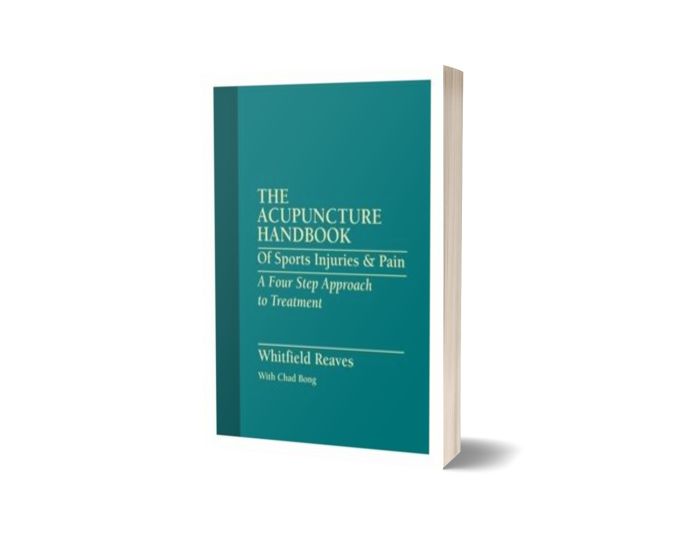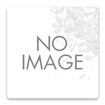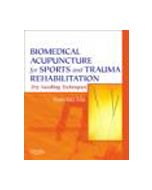We use cookies to make your experience better. To comply with the new e-Privacy directive, we need to ask for your consent to set the cookies. Learn more.
Acupuncture Handbook of Sports Injuries and Pain: A Four Step Approach To Treatment
The Acupuncture Handbook of Sports Injuries and Pain is a clinical manual that integrates traditional Chinese acupuncture with western orthopedic and sports medicine. It outlines the diagnosis, assessment, and treatment protocol for 25 common sports injuries.
It includes common conditions such as plantar fasciitis, rotator cuff tendonitis, and arthritis of the knees and hip. Diagnosis and assessment is summarized from both western and Chinese Medical perspectives and includes details illustrations and descriptions to facilitate precise treatment.
This book presents a four‑step approach to the treatment of sports injuries and pain with acupuncture. The four steps are: initial treatment strategies, meridians and micro‑systems, internal organ imbalances and treating the site of injury. The aim is to present a ‘treatment flow‑chart’ that covers all the main approaches to musculoskeletal conditions and that encourages the practitioner to think in a logical and systematic manner. On the whole, this aim is achieved admirably.
Considering the high volume of musculoskeletal conditions seen at an average acupuncture clinic, there are relatively few books that tackle the subject in detail. The main text recommended at my college was David Legge’s Close to the Bone, which covers more conditions than The Acupuncture Handbook, although Reaves’ book goes into more specific detail on treating the conditions featured. Where Legge’s book lists all the points in the shoulder region, for example, giving a useful overview of treating shoulder problems in general, Reaves hones in on the problems he is most experienced in treating, which makes for a more focused presentation. For example, on his website (www.TheAcupunctureHandbook.com) he admits that he does not specialise in cervical and lumbar pain; the section in the book on low back pain therefore simply covers the quadratus lumborum muscle. There is certainly a feeling that all the conditions included are very familiar to the author and that the techniques he presents have been thoroughly tried and tested.
The Acupuncture Handbook presents a pragmatic approach and refers to various methods and traditions, both Eastern and Western. It does not discriminate, but integrates a whole host of techniques from auricular acupuncture and cupping to trigger points and electroacupuncture; thus it delivers a rich and comprehensive overview of useful approaches. There is an injury ‘quick reference’ section detailing the main features of the conditions covered, and the appendices include various useful summaries such as a list of common topical applications, as well as a simple introduction to orthopaedic testing (something perhaps overlooked in many acupuncture schools). There is also a summary of typical Western pain medications that, although welcome, may have benefited from mentioning drug actions in TCM terms. I found the discussion on bleeding jing‑well points in order to activate the sinew channels particularly helpful and, like much of the book, immediately applicable in the clinic.
There are similarities between this book and Mark Seem’s work, particularly in the emphasis on the importance of palpation and Western anatomical knowledge, and also perhaps in the slight lack of faith in TCM‑style treatment of pain and injury. Although Seem is more overt about this, the relative lack of information on treating organ imbalances betrays a similar leaning in Reaves. One of several illuminating anecdotes concerns the treatment of an elderly woman in the college where Reaves teaches in Colorado. The students were convinced that Liver yin deficiency was to blame for her shoulder pain, and although treatment of this pattern produced general improvements in health, her presenting condition was unchanged. Reaves then assessed her using orthopaedic tests and treated locally for inflammation of the supraspinatus tendon ‑ with immediate improvement. As he emphasises elsewhere in the book, ‘never assume that internal organ dysfunction is directly related to pain and injury’. Whilst he stresses the importance of accounting for any underlying syndromes, this is largely limited to a repeated paragraph on using Taichong LIV‑3 and Yanglingquan GB‑34 for ‘Liver imbalances’. There are a few interesting exceptions, such as a discussion of the role of Spleen deficiency in shin‑splints or the role of Gall Bladder excess in iliotibial band (ITB) syndrome, but it would have been nice to read a little more about the author’s experience in treating internal imbalances.
Most of the real gems in this book are undoubtedly found in the ‘step 4’ sections on local treatment. Each muscle group and injury is explored carefully, accompanied by clear diagrams. Treatment strategies and optimum point locations are suggested based on the author’s experience, sometimes in exacting detail (for example ‘SI‑9.75’ is suggested for the treatment of infraspinatus problems!). Being greedy, I would ask for even more of the author’s clinical experience. Reaves has done an excellent job of including as many approaches as possible, but in my opinion the book could have been even better if some of the generic information was condensed into a chapter or two at the beginning, and his personal findings expanded further. In an effort to make each chapter self contained, every treatment strategy is repeated throughout; for example, needling the ‘opposite side’ is always given as an option, despite the conclusion that ‘treatment to the affected side is usually preferred’. The anecdotes and personal experiences of the author are the most interesting and useful aspects of the book, although at times it feels as though he has held back slightly on including more of this in order to avoid dogmatism. The book as a whole has such an inclusive feel, however, that further personalisation would sit quite happily.
Overall however, the author strikes a happy balance between clinically useful detail and inclusiveness. Although a second edition could be even better, this is essential reading for anyone who treats sports injuries.
Tom Kennedy
| Summary | It includes common conditions such as plantar fasciitis, rotator cuff tendonitis, and arthritis of the knees and hip. Diagnosis and assessment is summarized from both western and Chinese Medical perspectives and includes details illustrations and descriptions to facilitate precise treatment. |
|---|---|
| Author | Whitfield Reaves |
| Publication Date | 30 Dec 1975 |
| Number of Pages | 392 |
| Book Format | Semi Hard Spiral Bound Cover |
* Orders shipped outside of Europe are eligible for VAT relief and will not be charged VAT.




